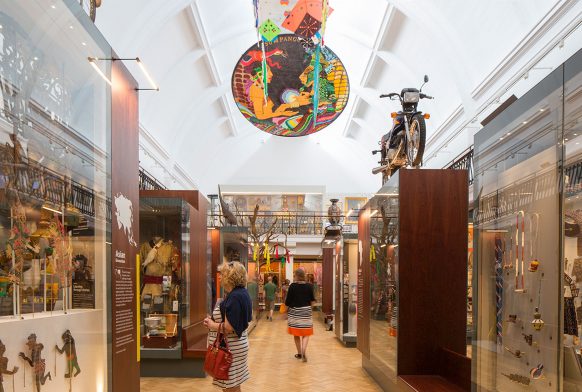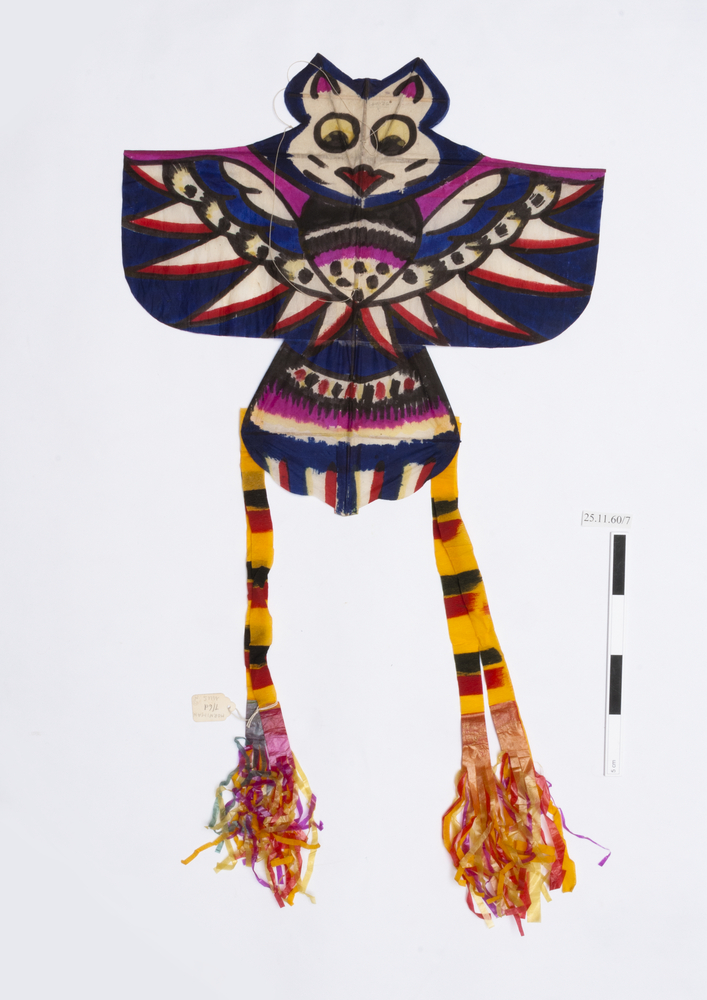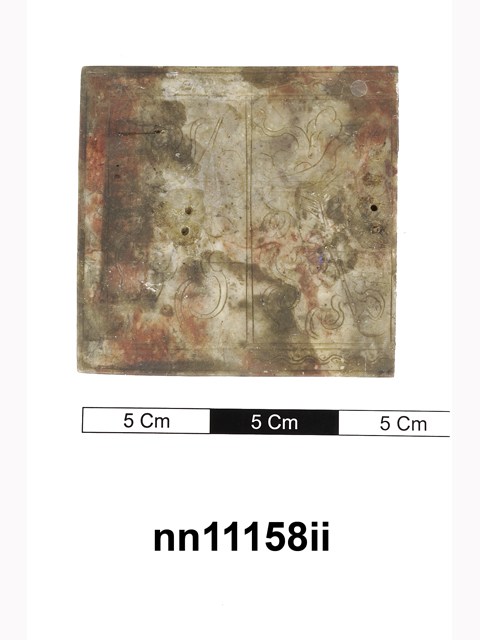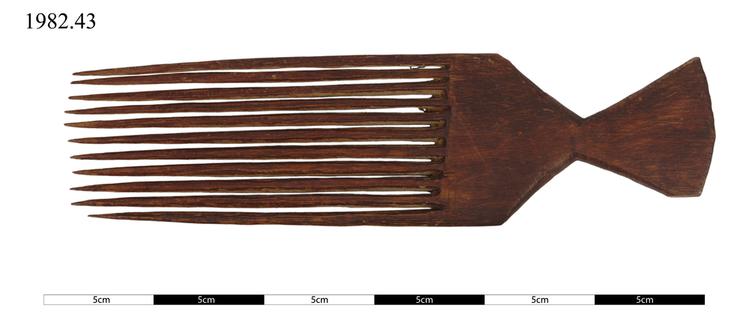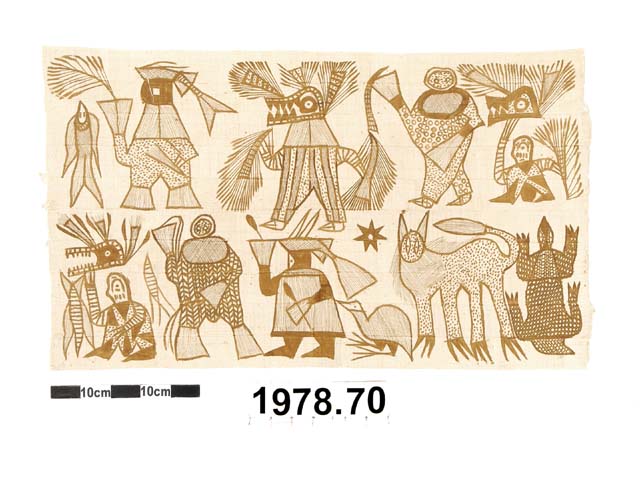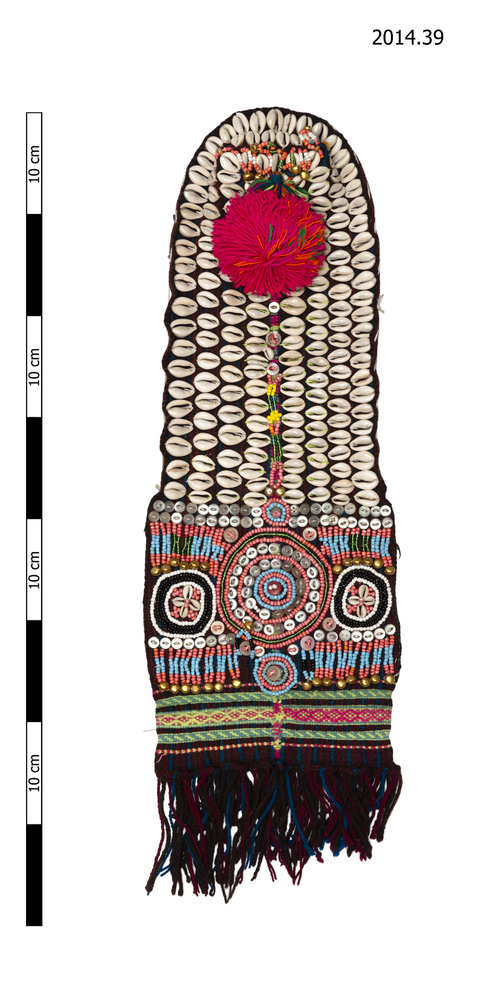
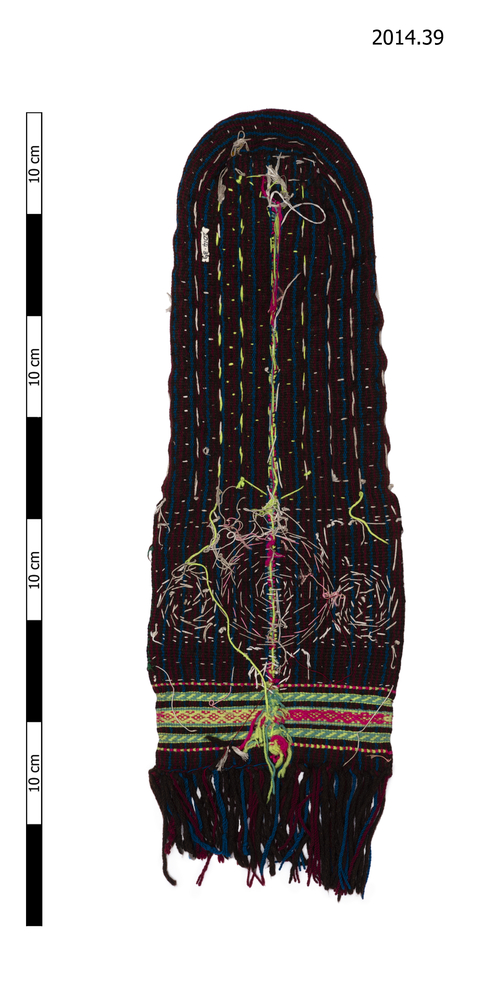
A headdress or 'kupas' made of woven textile with beads threaded onto it. There are also cowrie shells and small bells attached. The woven material is brown, dark red and blue and has tassels. The headdress also has a bright pink pom-pom.
This type of headdress or 'kupas' is similar in style and decoration to the headdresses worn by Kalasha women when they were first photographed in the early twentieth century, see for example the images held by the Pitt Rivers Museum taken by Reginald Schomberg in the 1930s. Today kupas are generally worn at festivals and celebrations or on special occasions, but they can also sometimes be used to shield the wearer from the sun when working outdoors in the summer. They are worn on top of the everyday shushut headdress. The roundel ('kera' or shield) on the beaded section of the kupas in the past related to the status of the wearer’s family. However these symbols have become divorced from their original meaning and today are understood more as decorative devices. Traditionally status in the Kalasha society was determined in part by giving lavish merit feasts. Specific merit feasts were hosted to celebrate particular achievements. The kera symbol relates to the status gained by killing an enemy (the rank of 'lay-mach' or man killer). An old Kalasha story relates how a daughter of the prestigious Baramouk clan from Bomboret Valley became the first woman to earn the right to wear a kera on her kupas: a tiriweri (bad spirit) was inhabiting the bashali which is a special building where women go during menstruation and to give birth. The tiriweri had been eating babies, but the woman put a halt to its evil by carefully plotting against it and then killing it. For her skill and courage the community made her lay-mach.



